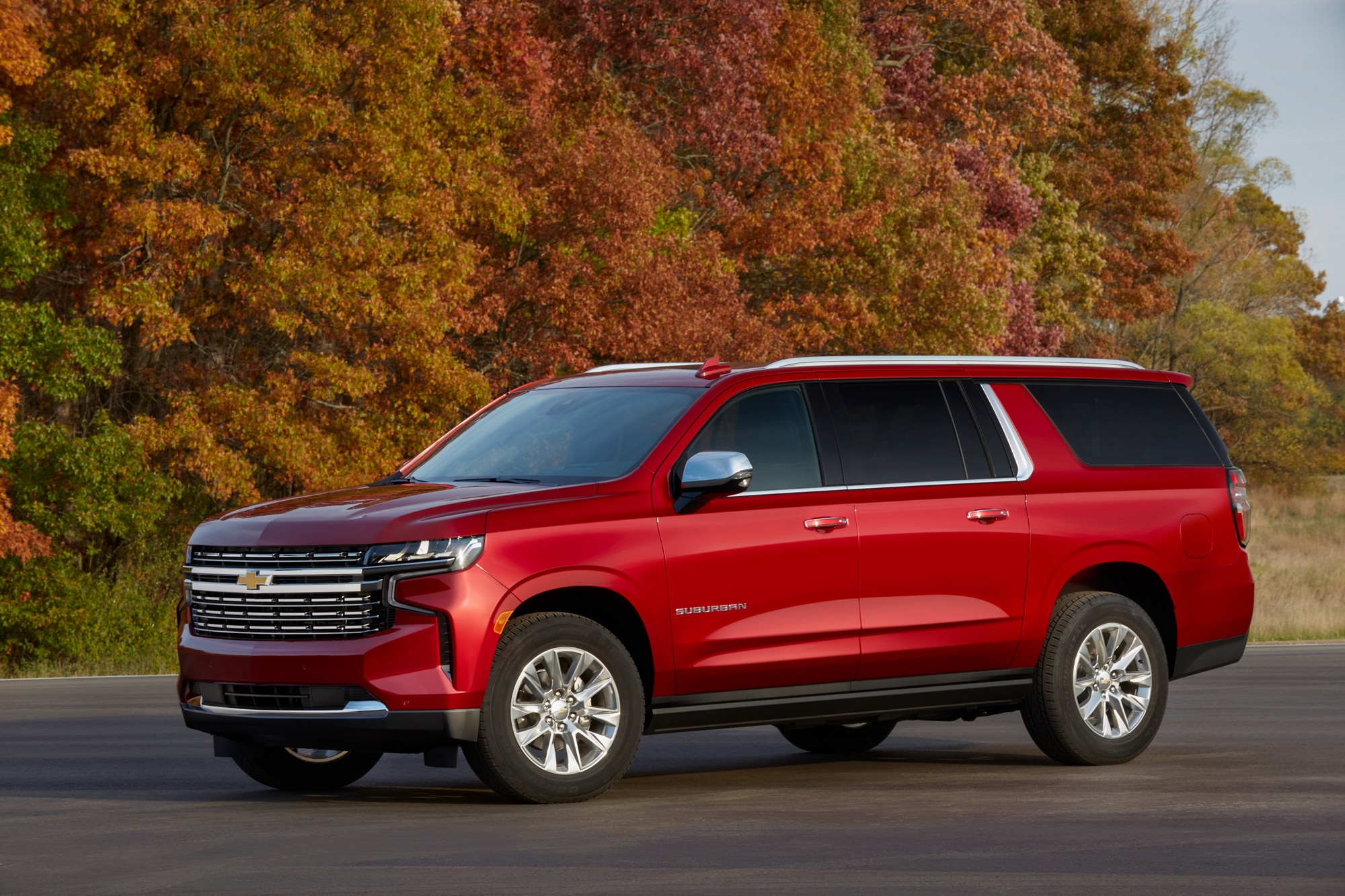What is a Full-Size SUV?
These big beasts appeal to those who need a lot of space and capability.
 Chevrolet
Chevrolet
Article QuickTakes:
Full-size sport-utility vehicles combine acres of passenger space and cargo room with brawny drivetrains and rugged frames, making them great choices for hauling the family and heavy loads. Typically built on the same platform as popular pickup trucks, large SUVs have prodigious towing ability, with every model in this segment capable of hanging at least 6,000 lbs on its hitch. Each provides three rows of seating and a modest level of off-road capability too.
Which Brands Sell Full-Size SUVs?
General Motors dominates the segment with four entries: the Chevrolet Tahoe and Chevrolet Suburban and the GMC Yukon and GMC Yukon XL. (The Suburban and Yukon XL are longer versions of the Tahoe and Yukon.) Each makes use of the Chevrolet Silverado/GMC Sierra pickup chassis. These models are available with one of two gas-powered V8s or a turbo-diesel six-cylinder engine, low-range four-wheel drive, and a long list of standard and optional luxury features.
Ford also competes in this class with the Ford Expedition and its long-wheelbase sibling, the Ford Expedition Max. The Jeep Wagoneer, Toyota Sequoia, and the Nissan Armada round out the segment.
How Much Does a Full-Size SUV Cost?
Truck-based SUVs are some of the most expensive mainstream vehicles out there. The base Nissan Armada's $50,495 price tag makes it the most affordable of the group, but almost every one of its rivals has an opening outlay within a few thousand dollars of that. The exception is the Jeep Wagoneer, which aims at a more upscale audience and comes with an initial price of $60,995. Expect to pay in the neighborhood of $80,000 for a high-spec version of the Ford Expedition Max, Chevrolet Suburban, Jeep Wagoneer, or GMC Yukon XL.
How Big is a Full-Size SUV?
These are the biggest SUVs on the market. The Chevrolet Tahoe, for instance, stands 210.7 inches long, while the Suburban spans 225.7 inches. That additional length affords the extended-wheelbase Chevy a lot of extra cargo space. Even carrying a full load of passengers, the Suburban features a whopping 42 cu.-ft. of room in the back for all your stuff; with the second and third rows folded, that number increases to an impressive 145 cu.-ft.. Meanwhile, the Tahoe offers 26 and 123 cu.-ft., respectively.
What Kind of Fuel Economy Does a Full-Size SUV Get?
Carrying around all that bulk hurts fuel economy. The eight-cylinder Toyota Sequoia's 13 mpg city rating and 17 mpg highway estimate are the lowest of the bunch, but other V8 models aren’t much better, returning only a couple of miles per gallon more in each measure. Turbo-diesel versions of the Chevrolet Tahoe and GMC Yukon are by far the thriftiest at the fuel pump, with ratings of 21 mpg city and up to 28 mpg highway, followed by the twin-turbocharged V6 powered Ford Expedition, which sees 17 mpg in the city and 23 mpg on the highway. Adding four-wheel drive to any of these full-size SUVs further reduces their efficiency.



